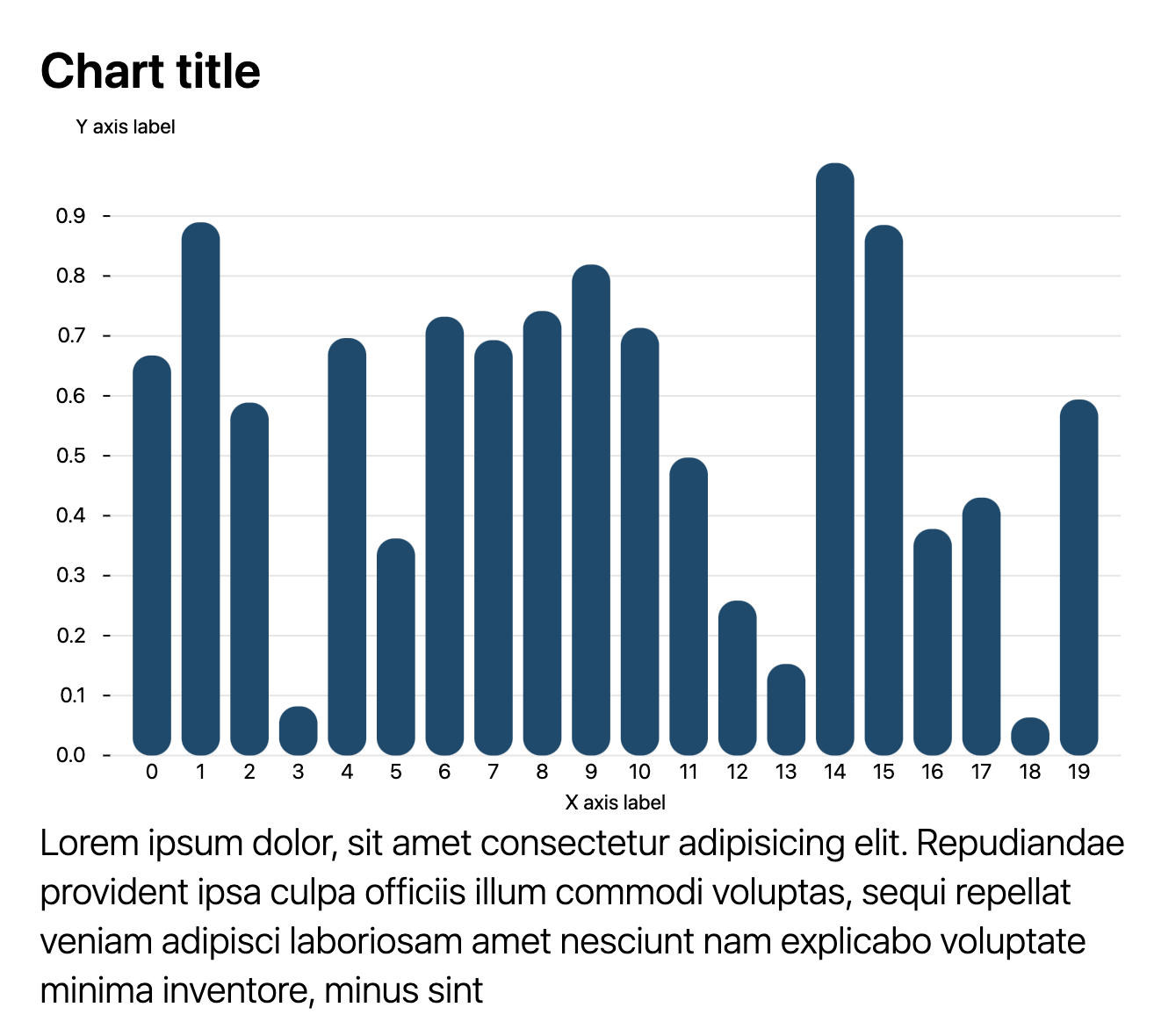Getting started
Premium components
Beta features
Deprecated components
Managed Cloud
Bar chart
The BarChart component is used for visualising data as a bar chart. It
provides a simple way to include charts without the need for using external
libraries to generate an image.
This component is now deprecated in favour of the BarChart v2 component which provides more options and flexibility.
Example JSON
Below are two examples of the JSON required to define a BarChart.
{
"type": "BarChart",
"options": {
"width": "2/4",
"data": [
{"x": 0, "y": 5},
{"x": 1, "y": 7},
{"x": 2, "y": 3},
{"x": 3, "y": 12},
{"x": 4, "y": 9}
],
"x_label": "X axis label",
"y_label": "Y axis label",
"chart_title": "Chart title",
"caption": "Lorem ipsum dolor, sit amet consectetur adipisicing elit. Repudiandae provident ipsa culpa officiis illum commodi voluptas, sequi repellat veniam adipisci laboriosam amet nesciunt nam explicabo voluptate minima inventore, minus sint"
}
}
Description
| Key | Description |
|---|---|
data | The data to plot in the chart, which should be an array of objects with keys x and y. |
x_label | The X-axis label. |
y_label | The Y-axis label. |
chart_title | Optional. The chart title. |
caption | Optional. Caption below the chart. |
sort_x_axis | Optional. Whether to enable sorting of data on the X-axis. Defaults to true. |
width | Optional. The width of the component. Only applies when inside a Section or Row component whose columns option is set to null. |
Data
The data key must be an array of objects, with each object containing the keys
x and y. Both these keys should contain numbers (not strings). A maximum
of 500 points can be plotted on a chart.
Theming
The colour of the bars is automatically chosen by the theme selected for the report. For more details see Theming.
Width
For details on the width key, please see here.
Example

Missing something?
Hybiscus is continuously improving and adding new features. If you think we are missing a critical feature, please do not hesitate to contact us and offer your feedback at support@hybiscus.dev
